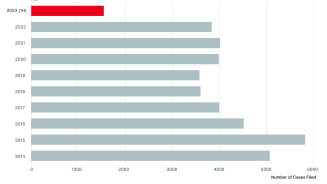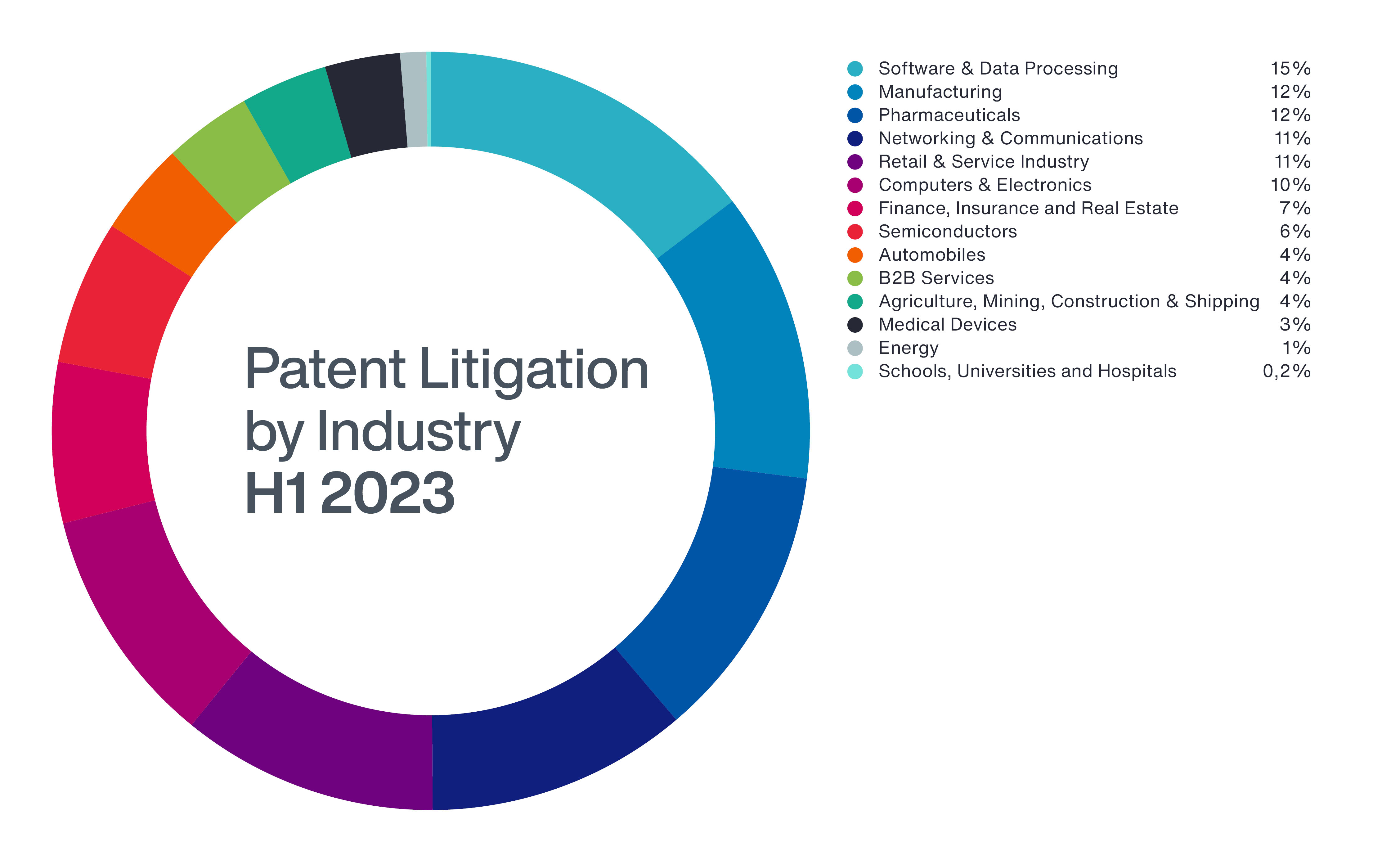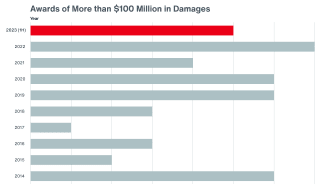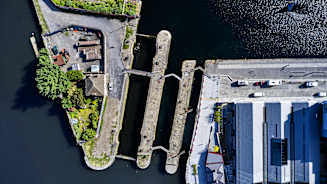2. There’s a Shift Toward NPE Suits
While the number of lawsuits may have fallen, there has been a marked shift in the type of litigant. In the world of IP, a non-practicing entity (NPE) is a party that holds a patent for a product or process but does not produce the product. Since 2018, there has been a rise in the proportion of cases filed by NPEs. In 2022, NPEs filed 63 percent of cases, the highest percentage of NPE suits since 2015. In H1 2023, roughly 51 percent of cases were filed by NPEs, which is significantly higher than the proportion of NPE suits in H1s over the past 10 years3.
Competitor interests in a business’s IP are typically well known, and associated risks can be managed in many ways — from building a defensive patent portfolio to pursuing insurance, to name a few. But litigation stemming from NPEs is harder to predict and manage. Roughly half of all suits filed by NPEs target technologies outside of a company’s core business. Organizations are facing new pressures to address changing exposures in their risk management strategies.
3. Patent Lawsuits are Dominating the Technology Industry
In an increasingly digitalized world, industries are continuing to upgrade their operations and service delivery models to remain competitive. As a result, new players are now entering new industries and territories. This exponentially increases the risk of patent litigation for the technology and software sector.
Technology companies continued to suffer the largest share of patent lawsuits in H1 2023 at 42 percent of the actions filed. Software and data processing companies were defendants in 15 percent of all patent lawsuits with parties that could be mapped to an industry. The largest damage awarded in H1 2023 was $470 million and for 2022, it was $950 million, both levied against technology giants4.
Aside from the latest trends in the technology industry, the automotive industry has experienced the longest continued growth in the number of suits, with an increase of 150 percent from 2019 to 2022. This can be attributed to the industry’s growing dependence on sophisticated technology, including the production of electric and self-driving vehicles. Other industries where suits increased were B2B services, retail and semiconductors5.
Patent Litigation by Industry 6

































































































































































































































































































































































